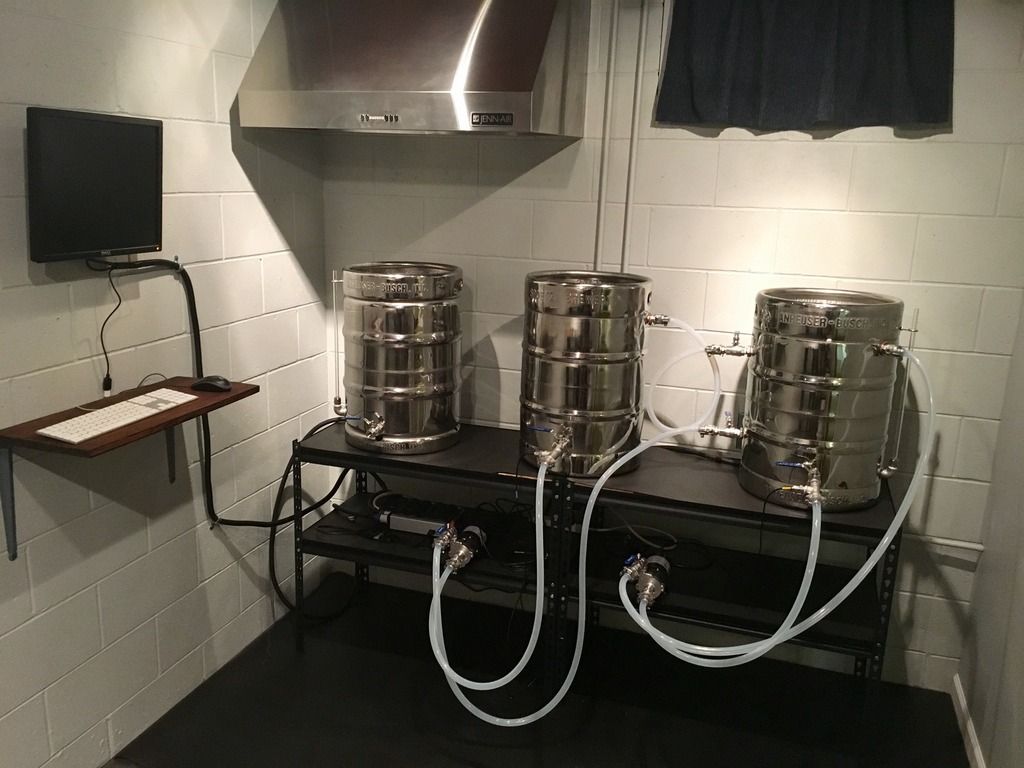Hello everyone,
I wanted to really thank you for all your thoughts. I've sat on this, and I've done some touring of my downstairs area. Here's where I am.
I don't want to put off brewing until I build my "dream" system. I am not used to BIAB at all and I need to open my mind. It will be rewarding to start on this method, with my existing 7 gallon stockpot. My indoor stove works fine for this need.
I enjoy too thoroughly the traditional 3-vessel setup to forego it, having invested so much into it. So I will be pursuing my original 3-vessel conception. I was a good brewer with my former system and loved the entire process, so I am looking forward to beginning anew, with some new things learned, of course.
My basement does not suit. It is just too "rustic" with exposed beams and fibreglass, not to mention the fact such things make it unccleanable or unsanitazable, for me to be comfortable to brew inside, in this space.
This leaves me outside. I'm intrigued by both the Brutus-styled, gas-fired but Honeywell solenoid-controlled system, as well as a full electric-system. I didn't mention that I already had my banjo burners sitting in my gathering collection. Doesn't mean I can't find a use for them, but it does mean, along with the coming Chuggers, I've begun some first steps towards the gas system. Doesn't matter. This is something I need to sit with, because you e-brewers really do intrigue me with what you do. If I go gas, which is where I seem to be heading, the nice thing is nothing is set in stone - I can automate as time and money allow.
I mentioned I'm a fan of flame. A friend at the time, a fellow ex-pat from Goose Island, Jim Cibak; he worked for 3 Floyds at a time when they were still - perhaps still are - direct firing. I like the notion of local caramelization though I know the same can be, probably is, obtained with e-heating elements. It's just an unknown area to me. I know fire. Different, but not necessarily better, of course.
If I had my druthers, I'd have a steam jacket.
Finally, though I am planning on a 20 gallon system, I want to make clear that is only to give me room. I don't plan on brewing in, like, 18 gallon brewlengths, at least not with any regularity. Much more likely is in the 12-14 gallon range. Again, a strapping son goes a long way.
Now, let me admit the most insane notion: Some may have seen, most or all, probably not, but I'm a fan of Black Sheep Brewery, along with Samuel Smith and other Yorkshire breweries I've been lucky to try. Simply: I want to open ferment. And I want to try building a Yorkshire Square method. And without blushing, though I know it should, I want to do this all outside, where summer temps can hit close to 100F and winter can easily go below 0. So a means to control temps rigorously, tightly, in this inhospitable environment.
Move cold wort to an open fermenter, then roll the fermenter on a cart of some kind, to a waiting chamber that will work. Top part contains the vessel, outflow through a T/C to a pump, a fishtail fan spreader up top that fires the early wort back on to the krausen. Just as it's done up in the north of England. And perhaps (I've queried them), places like
Pratt Street Alehouse, Baltimore?
This is what's spinning, this is what I'm chewing on.
Thank you all again.








![Craft A Brew - Safale S-04 Dry Yeast - Fermentis - English Ale Dry Yeast - For English and American Ales and Hard Apple Ciders - Ingredients for Home Brewing - Beer Making Supplies - [1 Pack]](https://m.media-amazon.com/images/I/41fVGNh6JfL._SL500_.jpg)

















































